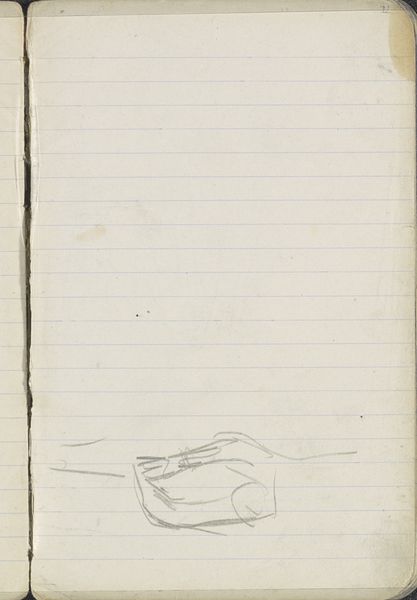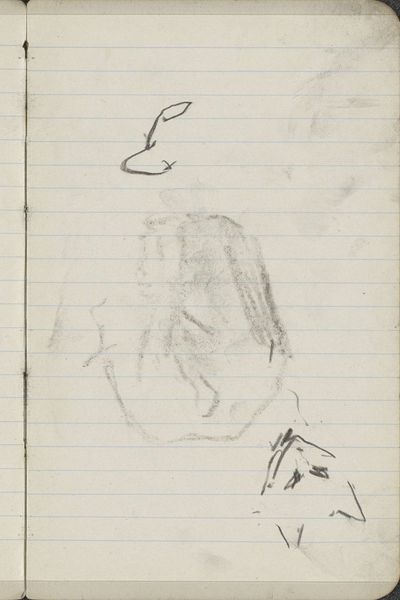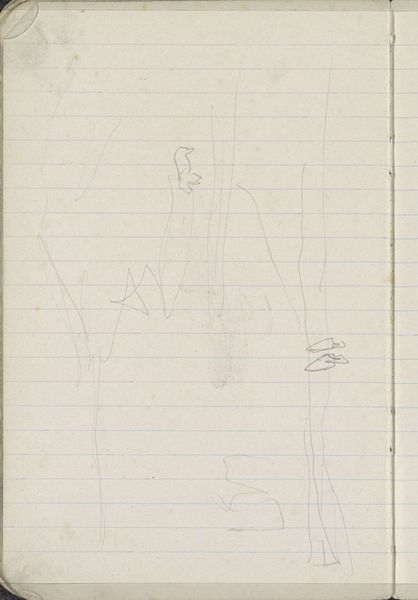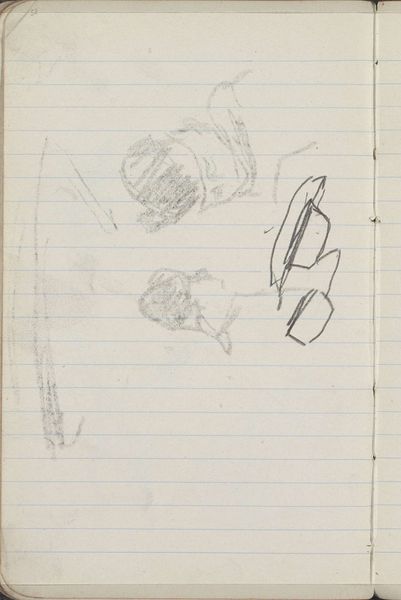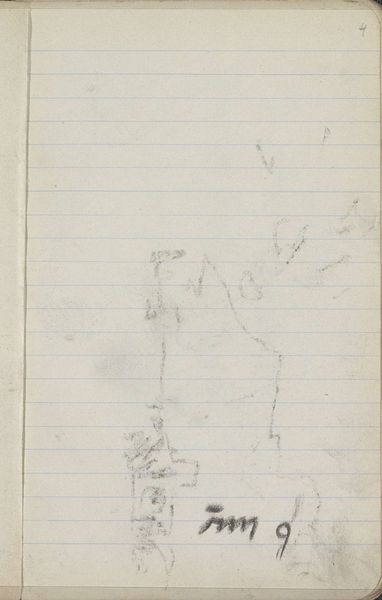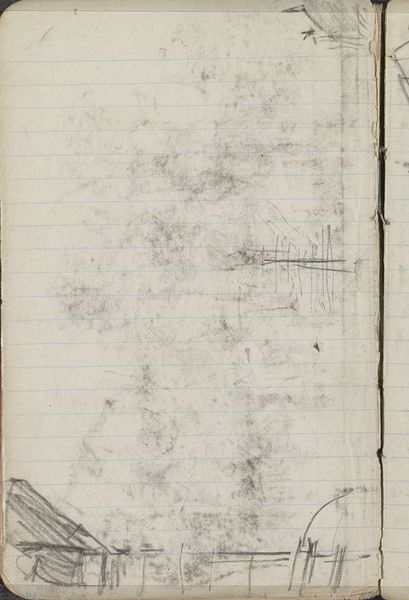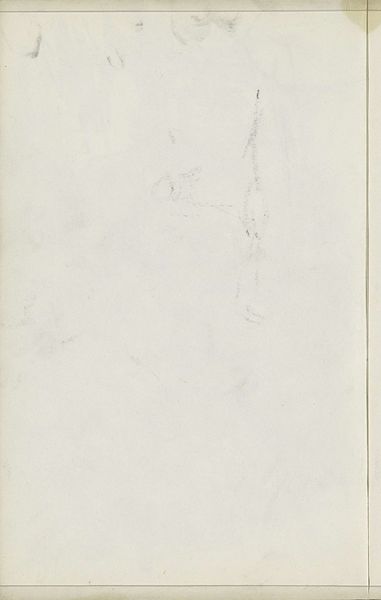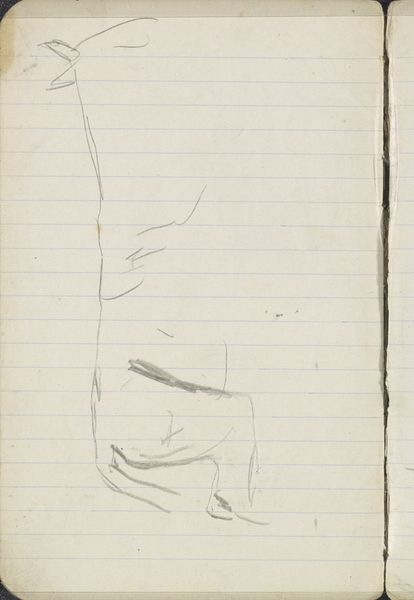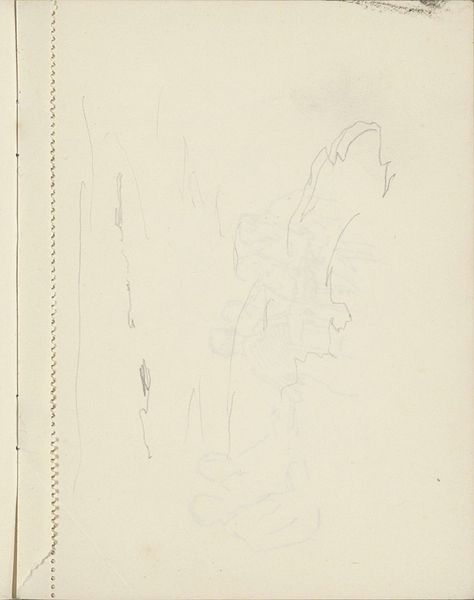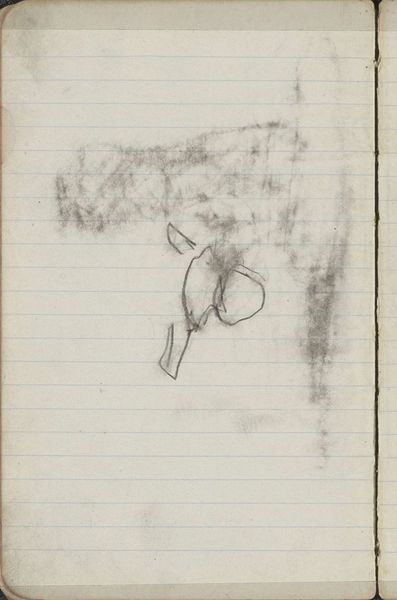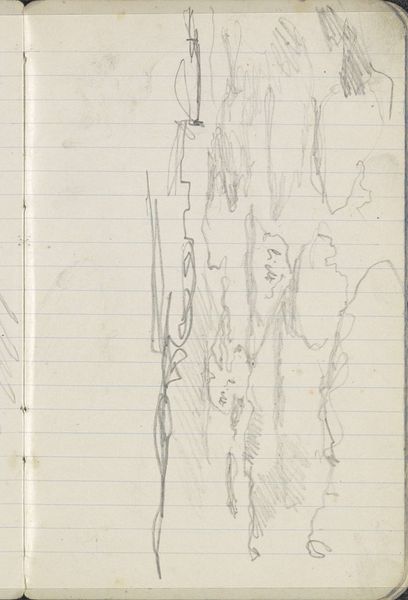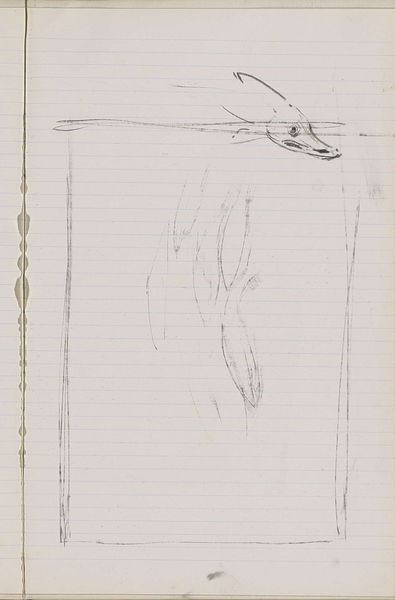
Copyright: Rijks Museum: Open Domain
Editor: Here we have George Hendrik Breitner's "Studie, mogelijk van een landschap," or "Study, possibly of a landscape," created sometime between 1882 and 1900. It’s a pencil drawing on paper, currently held at the Rijksmuseum. It's such a fleeting sketch. What do you see in this piece? Curator: The initial impression is one of memory and loss. The ephemeral lines, like faded etchings, hint at a landscape almost forgotten, a palimpsest of the past. The emptiness around it amplifies the sense of absence. Tell me, what sort of landscapes do you find yourself drawn to, and how do you think that shapes your view? Editor: I like sweeping vistas, things that are grand and panoramic! So this feels… unfinished, I guess. Curator: Perhaps it is unfinished, or perhaps its power lies precisely in its suggestion, in the open space inviting our projections. The drawing within the ruled page could symbolize a dream glimpsed within the ordered reality of daily life, a memory trying to take shape against the linearity of time. It makes you think about the meaning of these little landscape images within Dutch culture. The suggestion of form is enough. Editor: That’s an interesting take. I hadn't thought of it that way, seeing the lines of the notebook page as a symbol too. It's making me consider how the medium itself impacts our reading of the work. Curator: Exactly. Think of it as the artist grasping for something intangible, the way landscapes become imbued with symbolic meaning of nationhood and identity over time. What remains when we erase everything unnecessary? Editor: It seems the essential quality, and perhaps, a new kind of appreciation for less conventional forms. Thank you! Curator: A pleasure! It is in these subtle images, so to speak, that the deepest roots of cultural memory are sometimes found.
Comments
No comments
Be the first to comment and join the conversation on the ultimate creative platform.
